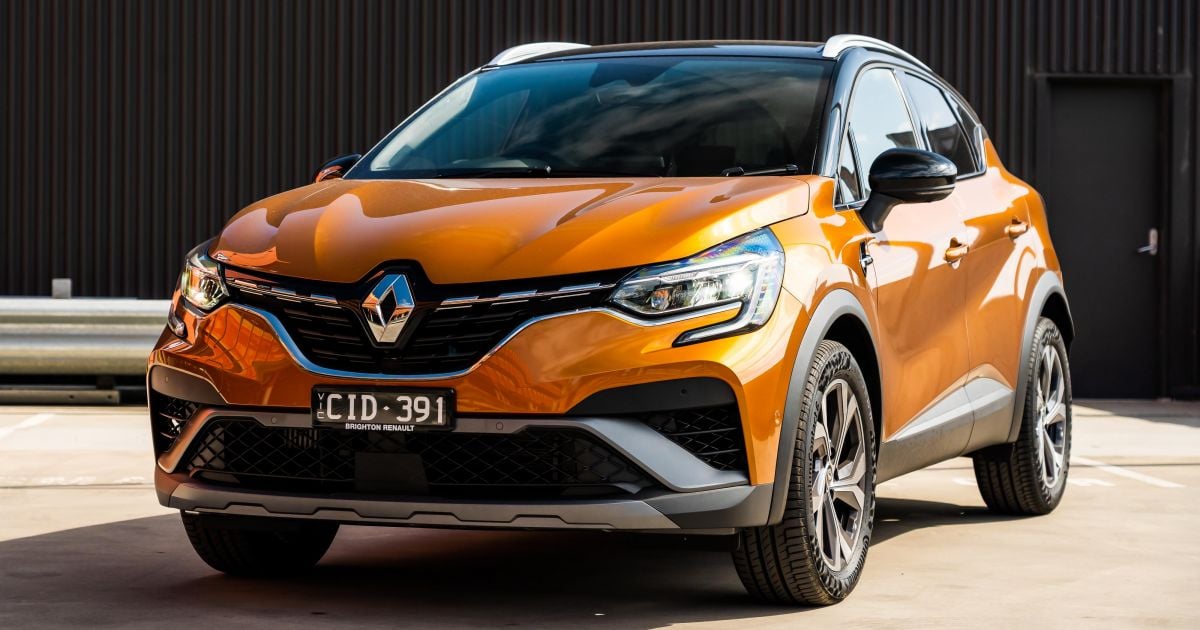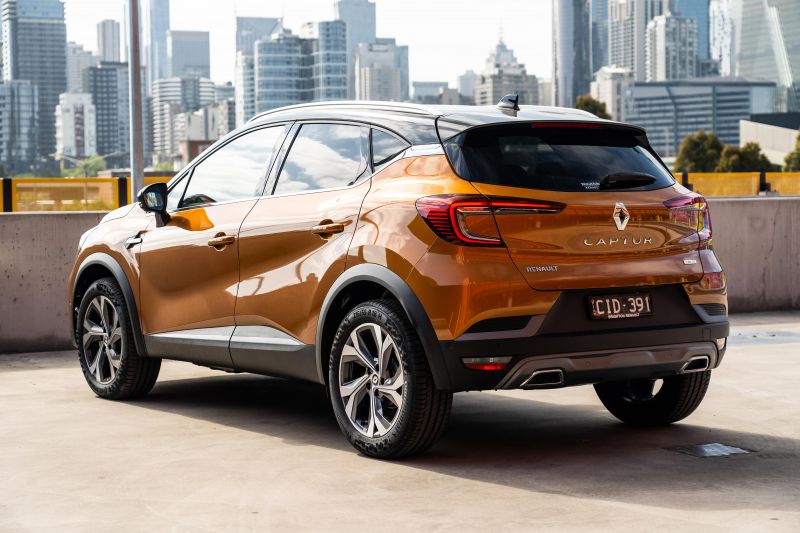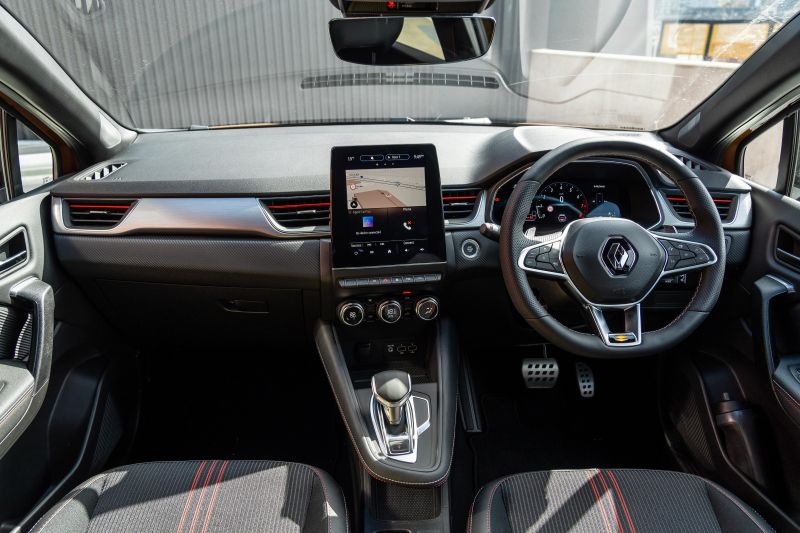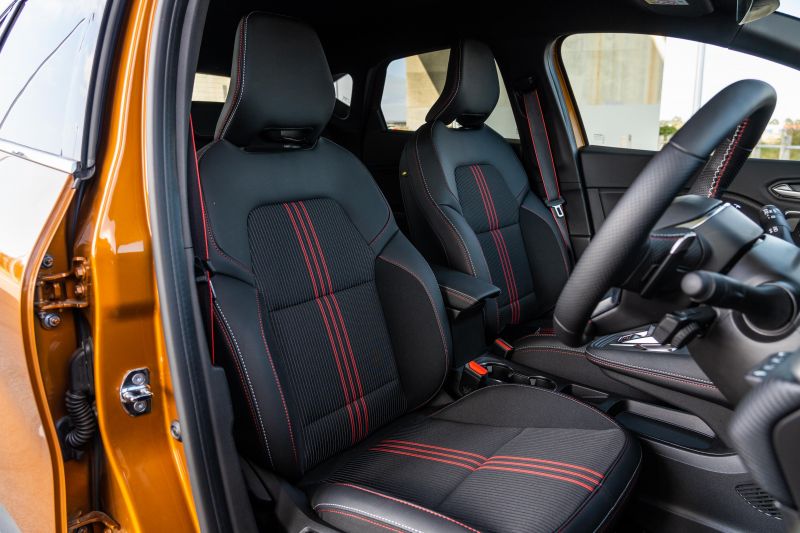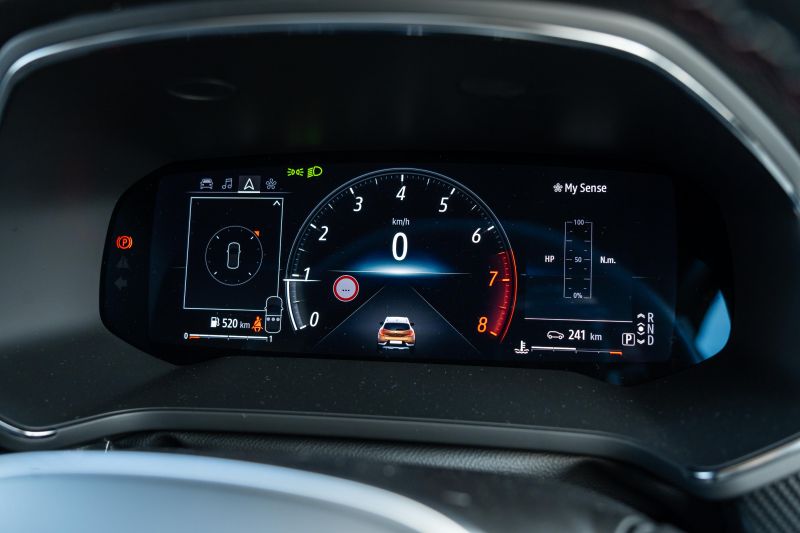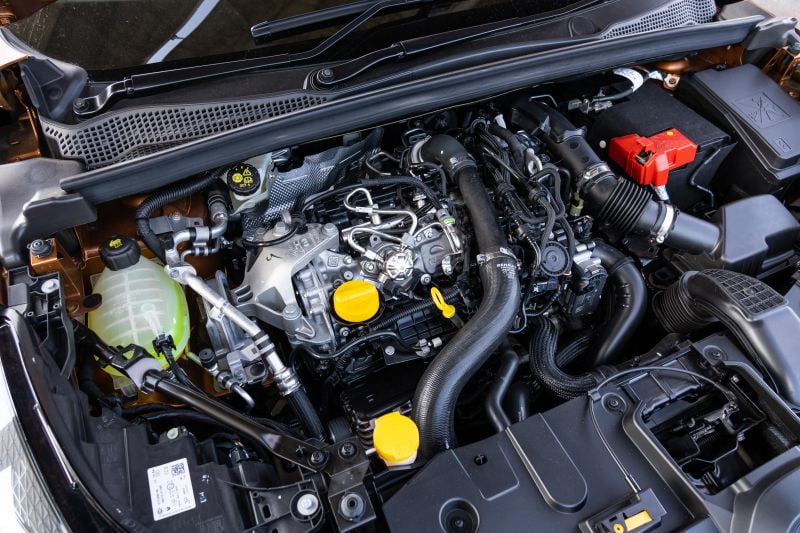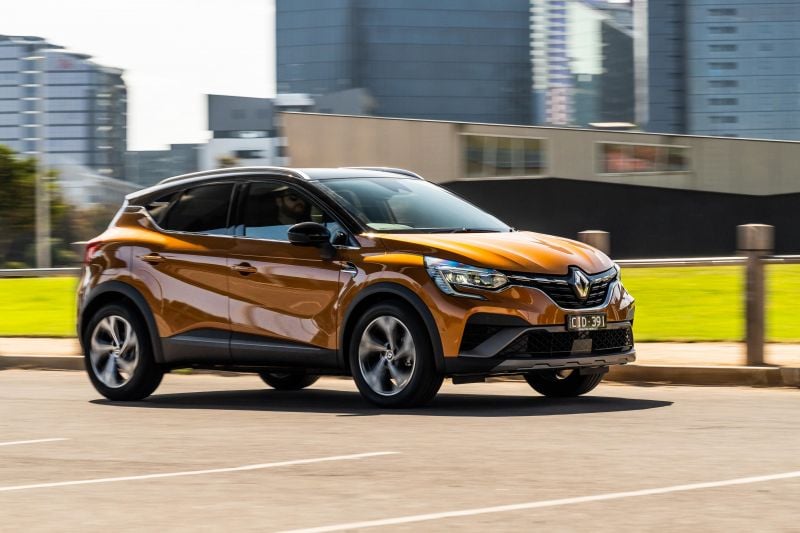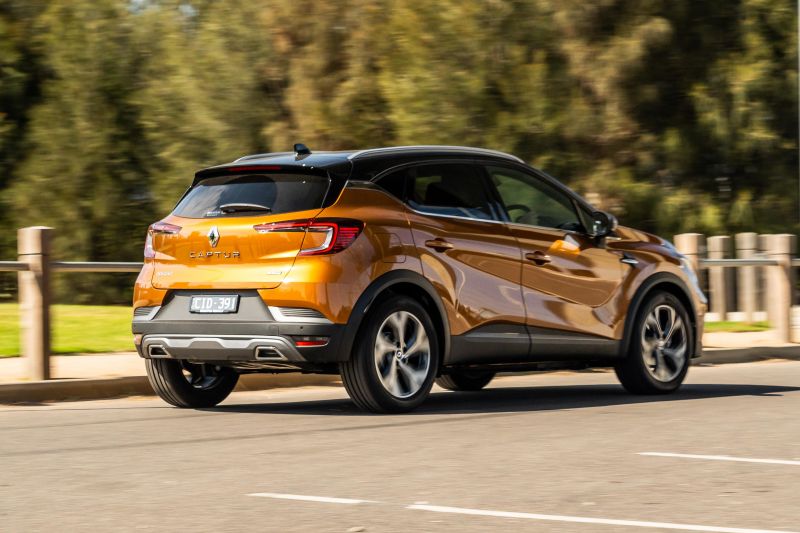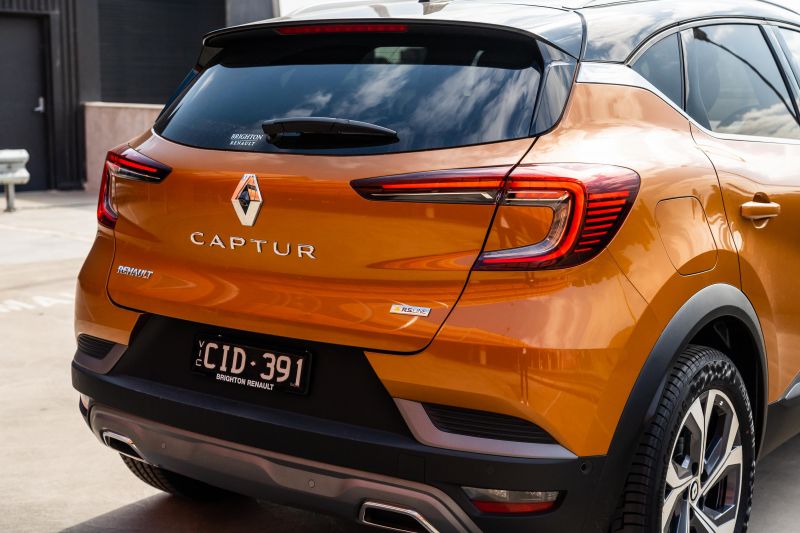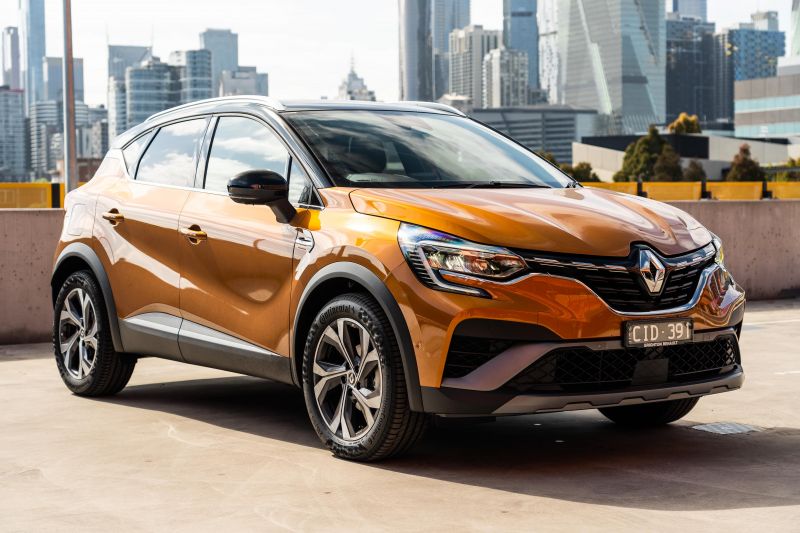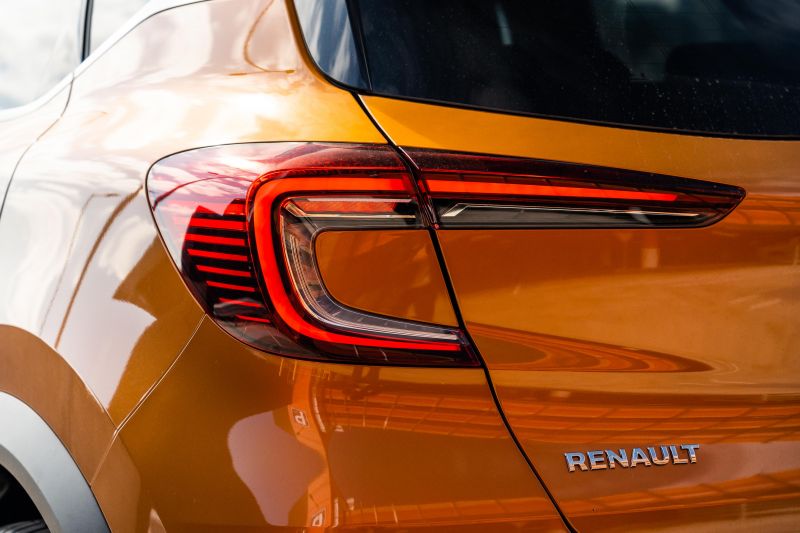Almost three years on from its launch in Australia the Renault Captur is still a sharp looking little SUV.
It has struggled to catch the eye of local buyers; though, with fewer than 1000 sold to date in Australia. It’s outsold by its slightly bigger brother, the Arkana, and on the sales charts is sitting very narrowly behind the Nissan Juke; its less powerful twin-under-the-skin.
Why? The Captur goes head-to-head with some of the hottest new cars in Australia, so it’s easy to understand how it gets lost at times. But beyond that, it’s hard to understand why more people haven’t put the Captur on their shopping list.
How does the Renault Captur fare vs its competitors?
View a detailed breakdown of the Renault Captur against similarly sized vehicles.

Renault
Captur
How much does the Renault Captur cost?
With a sticker price of $41,300 before on-road costs, the R.S. Line on test here goes head-to-head with a raft of smaller competitors such as the Mazda CX-3, similar-sized options like the Honda HR-V, along with bigger cars like the Mazda CX-30 and Hyundai Kona.
The equivalent CX-3 is the G20 Akari ($38,620), while the Honda HR-V ($36,700 to $47,000 drive-away) is offered only in two variants.
The equivalent CX-30 is the G20 Astina ($42,210), while the Kona Premium N Line ($42,500) is even sportier-looking than the Captur.
Renault Captur pricing
- 2024 Renault Captur Life: $33,000
- 2024 Renault Captur Zen: $35,000
- 2024 Renault Captur Intens: $39,500
- 2024 Renault Captur R.S. Line: $41,300
All prices exclude on-road costs.
Brighton Renault has around 50 examples of the Captur in flagship R.S. Line trim, and is offering a special price for CarExpert customers of $42,990 drive-away. If you’re interested in a Captur R.S. Line, CarExpert can help you find one and connect you with the right dealer. Click on this link for more information.
What is the Renault Captur like on the inside?
This is a really nice little cabin, with plenty of showroom appeal.
The design is clean and modern, with unique touches such as the wing-style centre console and iPad-style touchscreen, helping elevate it above the crowd.
Unlike the leather-trimmed Intens, the R.S. Line features cloth seat inserts and leather bolsters designed to play into its racy vibe. Combined with plenty of red highlights and accents, they do a solid job.
Most of the materials feel high quality, from the soft leather on the steering wheel to the soft touch dashboard, and the configurable ambient lighting is a nice touch.
It’s not perfect: as that wing-style storage space feels a bit wobbly when you bump it with your knee and the sharp looking transmission selector also feels a bit toy-like. Overall though, this is a nicely thought-out place to spend time.
The fundamentals are good, too. The driving position is nice and high to elevate shorter drivers above traffic, but tall drivers will still be able to get comfortable.
Most the major controls are where you’d expect. Cruise control is on the steering wheel, not the transmission tunnel like on older French cars, but the audio control pod behind the steering wheel does take some getting used to.
The driver is faced with a crisp 10.25-inch digital instrument binnacle which looks properly premium. It has a range of different layout options, with slick graphics that are easy to read at a glance.
The vertical central touchscreen infotainment system isn’t quite as polished. This particular screen felt faster than the Captur we first drove in 2021, but it’s still a bit laggy compared to the system in the new Hyundai Kona, for example.
Apple CarPlay is wired only, and older USB-A plugs feature instead of more modern, faster USB-C units. Expect that to change when the Captur is treated to a mid-life refresh.
Storage around the cabin is generous, from the two-tier centre console to the decent under-armrest bin, and there are two USB-A ports in the front to complement the wireless phone charger.
Rear leg room is good for a compact car. Adults can realistically sit behind tall-ish adults for shorter journeys, and kids will have no trouble back there. Rear passengers are treated to air vents, USB chargers, and decent storage bins in the doors.
Headroom isn’t quite as good; although, it’s acceptable for children or shorter adults. There are pair of ISOFIX points, along with three top-tether points, as you’d expect.
Boot space is 422L with the rear seats in place, 536L including under-floor storage and the rear bench slid forward, and 1275L with the rear seats folded flat.
Although on paper those numbers are aligned with much bigger cars, the shape of the load bay means bigger items like prams or golf clubs will be a tight squeeze. It’s still a practical car, but similar priced cars like the Kona and Seltos offer a more usable space.
What’s under the bonnet?
The Captur’s 1.3-litre four-cylinder turbocharged petrol engine produces 113kW of power and 270Nm of torque.
It’s mated with a seven-speed dual-clutch automatic transmission, with drive sent to the front wheels only.
Claimed fuel economy is 6.6L/100km on the combined cycle. We saw 7.5 litres per 100km over a week of mixed driving.
All models have a 48L fuel tank, and require 95 RON premium unleaded petrol.
How does the Renault Captur drive?
Despite its small engine, the Captur packs a decent punch in the city.
Unlike the Nissan Juke, which has a version of the same engine with less power and torque, Renault hasn’t bothered bringing a base tune to Australia.
That means the Captur feels relatively quick when you put your foot down below 60km/h, and gets away from the lights fast enough to catch the average Corolla driver napping. The dual-clutch transmission shifts smartly on the move, although it can be a bit awkward off the mark, occasionally hesitating before it engages a gear.
It’s also slow to shift from drive into reverse, not helped by the fiddly gear shifter. It often takes a couple of glances at the instrument cluster to ensure you’re actually in the right gear, as was the case at launch.
Like the related Juke, the Captur feels surprisingly lively. The steering is light and quick, and there’s plenty of grip from the Continental tyres if you get enthusiastic.
It’s not an outright sports car, nor quite as punchy as something like a Hyundai Kona N Line, but it does have just enough sportiness baked in to back up the R.S. Line badge.
Of course, quick and light steering is also ideal for darting through gaps in traffic and sneaking into tight parking spaces. All-round visibility is good; although, there’s a bit of lag from the slightly grainy camera system when you flick into reverse.
Even the ride is well sorted. There’s the occasional thud from the 18-inch alloy wheels over really sharp bumps, but otherwise the Captur floats along better than a small SUV on big alloys really should.
The only real knock on refinement is the amount of noise generated by the tyres on anything other than perfect tarmac. It’s not alone in being noisy – plenty of small SUVs get a bit uncouth on coarse-chip roads – but it’s decidedly out of keeping with the polished way the car otherwise drives.
What do you get?
Captur Life highlights:
- LED head- and tail lights
- Cruise control and speed limiter
- Paddle shifters
- Manual air conditioning
- 7.0-inch touchscreen infotainment system
- Apple CarPlay and Android Auto
- 4.2-inch instrument cluster screen
- 6-speaker sound system
- 17-inch alloy wheels
Captur Zen adds:
- Adaptive cruise control with stop/go
- Keyless entry and start
- Heated leather-wrapped steering wheel
- Climate control air conditioning
- Rain-sensing wipers
- Wireless phone charging
- Blind-spot monitoring
- Rear cross-traffic alert
Captur Intens adds:
- 9.3-inch infotainment display
- Satellite navigation
- Arkamys Auditorium 6-speaker sound system
- 7.0-inch colour trip computer
- Satin grey roof rails
- Surround-view camera
- Power driver’s seat
- Heated front seats
- Automatic brake hold
- LED cabin lighting
- Storage nets on front seatbacks
- Auto-dimming rear-view mirror
- Dual rear USB ports
- Black leather trim
- Privacy glass
- Exterior chrome highlights
- 18-inch two-tone alloy wheels
Captur R.S. Line adds:
- Side parking sensors
- 18-inch R.S Line two-tone alloy wheels
- F1-inspired front bumper insert
- Dual chrome fake exhaust tips
- Gunmetal grey exterior accents
- Front and rear skid plate elements
- R.S. Line badging (exterior and interior)
- R.S. Line door sills
- Carbon fibre-look interior inserts
- Alloy sports pedals
- Red and grey contrast stitching
- 10.25-inch digital instrument cluster
- Frameless auto-dimming rear-view mirror
- Easy Park Assist (automated parking)
- Automatic high-beam
Options
Peace of Mind Package: $1000 (Captur Life)
- Blind-spot monitoring
- Rear cross-traffic alert
- Hands-free key card
Easy Life Package: $2000 (Captur Intens)
- Easy Park Assist (automated parking)
- Automatic high-beam
- 10.25-inch digital instrument cluster
- Frameless rear-view mirror
Is the Renault Captur safe?
The Renault Captur has a five-star ANCAP safety rating based on Euro NCAP testing conducted in 2019.
It scored 96 per cent for adult occupant protection, 84 per cent for child occupant protection, 75 per cent for vulnerable road user protection, and 70 per cent for safety assist.
The Captur features the following safety equipment:
- AEB incl. Pedestrian, Cyclist detection
- Safe distance warning
- Lane departure warning
- Lane keep assist
- Traffic sign recognition
- Reversing camera
- Front, rear parking sensors
Blind-spot monitoring and rear cross-traffic alert are standard on the Zen, Intens and R.S Line trims and optional on the Life. 2022 saw the introduction of adaptive cruise control with stop/go as standard on Zen, Intens and R.S. Line trims.
How much does the Renault Captur cost to run?
The Captur is backed by a five-year, unlimited-kilometre warranty and up to five years of 24/7 roadside assistance.
Servicing is required every 12 months or 30,000km – whichever comes first – and the first five are capped as follows:
| Interval | Service Pricing |
|---|---|
| 12 months/30,000km | $399 |
| 24 months/60,000km | $399 |
| 36 months/90,000km | $399 |
| 48 months/120,000km | $789 |
| 60 months/150,000km | $399 |
CarExpert’s Take on the Renault Captur
Yes, the Renault Captur R.S. Line is an interesting little SUV for buyers who want to stand out a bit from the crowd – but it has something to offer than its good looks.
With a comfortable, spacious cabin and resolved drive, it’s a solid all-rounder.
Although it isn’t cheap, when you consider there are bigger alternatives available for the same money, it does enough to justify the sticker price in R.S. Line guise.
It’s worth taking for a test drive alongside the usual suspects.
Click the images for the full gallery
BUY: Renault Captur
MORE: Everything Renault Captur

